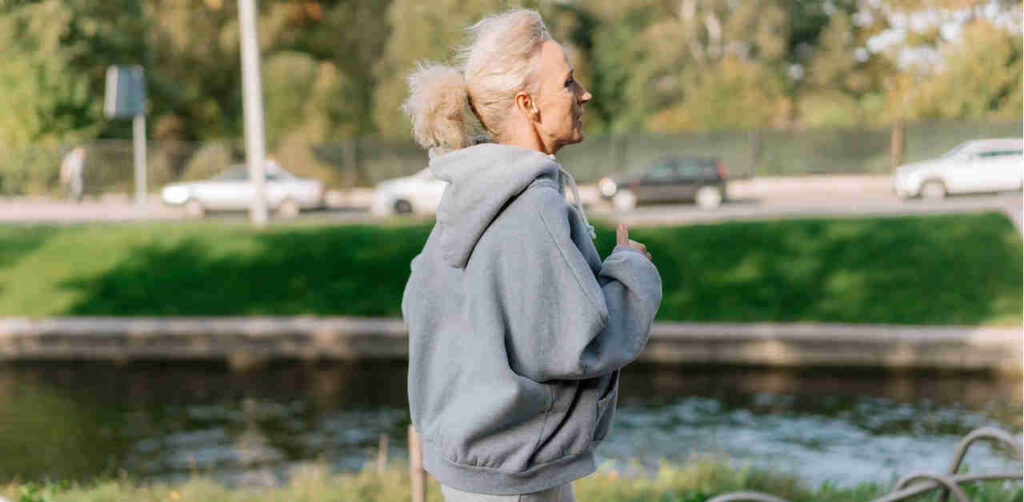Pay special attention to these susceptible areas as you age
Published by: AARP
If you want to keep your body strong and healthy in the second half of life, you might need some new routines. Here’s what you’re up against and why you should treat your most vulnerable body parts with care.
1. Your eyes
Even if you have perfect vision, an eye exam every one to three years should be part of your routine starting at age 55.
2. Your teeth and gums
As people get older, there is more gum recession and bone loss, and that can expose some root surfaces. But these surfaces aren’t covered with enamel, the hard outer coating that protects the top of the tooth, so they become more susceptible to decay.
After 50, you may also make less saliva, which dissolves the acids made from breaking down food, making them less damaging to teeth. Or you may be prescribed one of the hundreds of medications known to cause dry mouth, which also puts teeth at risk.
To keep your teeth and gums healthy for the long haul, it is recommended to double down on your oral hygiene. If you’re on a drug that causes dry mouth, ask your doctor if you can take a smaller dose or a different drug. And avoid chewing ice, as tooth enamel can chip.
3. Your feet
Calluses on the soles develop from foot abnormalities that make it difficult to walk. Similarly, bony lumps called bunions form due to long-term pressure on the big toe joint. Such problems not only make your feet smart but can lead to knee, hip, and back problems.
Forty to 60 are the prime ages for plantar fasciitis, inflammation of the tissue band (fascia) that connects the heel bone to the toes. It typically comes from overstressing the fascia due to the force of activity and hard surfaces.
What to do: Wear supportive shoes — even around the house. If you’re not supporting and protecting the foot, then you’re going to get arch problems, heel pain, and Achilles tendinitis.
Sidestep other foot ills by having your feet measured. Many people don’t realize that feet can get bigger with age and suffer from shoes that are too tight.
4. Your pelvic floor
You might think of the pelvic floor — the muscles that stretch from the pubic bone back to the tailbone at the bottom of the pelvis — as a female concern. But it’s just as important to men.
The pelvic floor muscles hold up your bowel, your bladder, and your uterus, if you’re a woman, and your prostate, if you’re a man. A strong pelvic floor is also essential to sexual arousal and orgasm.
One in 4 women experience pelvic floor disorders, often as a result of childbirth, though they may emerge long after the kids have grown. Weakened pelvic muscles can lead to urinary or fecal incontinence, pain, and prolapse when organs drop down and even protrude outside the vaginal canal. Men can also experience incontinence, particularly after prostate cancer treatment.
Strengthening your body’s core is also vital. Abdominal muscles, hip muscles, and spinal muscles connect to and support the pelvic floor, and vice versa, allowing it to work at its best.
5. Your hips and knees
The knees and hips are weight-bearing joints. They’re subjected to a lot more stress than your shoulder or elbow. And having a knee or a hip that’s causing you pain diminishes every aspect of your life.
Unfortunately, hip and knee pain are common after 50 and often lead to surgery. Active people who play a lot of sports are prone to knee injuries and those injuries can result in premature arthritis.
Other factors like obesity can also play a role. Carrying extra weight seems to predispose our joints to wear out, not just because there’s more stress on the joint, but because having a lot of fatty tissue on your body predisposes you to inflammation, and that inflammation seems to attack hip and knees.
Arthroscopic surgery to trim or reconstruct damaged cartilage and remove fragments of bone or cartilage may offer relief from knee pain or alleviate symptoms of problems that damage the cartilage and the soft tissues around the hip joint.
Many people will eventually need a joint replacement in their later years. Fortunately, surgery is increasingly common — and safe — and often can be done at surgical centers, allowing you to go home the same day.
6. Your ears
Just 2 percent of Americans ages 45 to 54 have serious hearing loss. But that changes over time, rising to half of the people 75 and older.
Hearing changes may be imperceptible year to year, and it takes the average person seven years to seek help, according to the Hearing Loss Association of America. But addressing hearing loss early on may lead to less precipitous declines and lower risks for depression and dementia, both of which can be linked to poor hearing.
Another reason to care for your ears: They play a crucial role in preserving your balance and preventing falls, which become more common and risky as you age.
